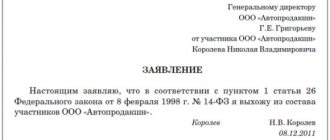Setting shifts in production
According to Article 103 of the Labor Code of the Russian Federation, shift work means working at an enterprise in two, three or four shifts. It is permissible to establish a shift schedule in two cases:
- if the duration of the work process is higher than the permissible daily norm;
- if it is necessary to increase the volume of production and ensure continuous and efficient operation of equipment.
The use of shift work at an enterprise must be documented in local regulations and agreements with workers, and agreed with the trade union. If the work schedule of individual employees differs from the generally established one throughout the organization, then additional agreements must be signed with them. agreements. It is important that shift work, within the framework of the definition established by Article 103 of the Labor Code of the Russian Federation, will not be considered a regime when an employee works for one day and then is replaced by another. Working two or three days a day does not fall under this concept. Shift work involves working in several shifts every day. When establishing shift schedules, management is obliged to familiarize employees with them no later than 1 month before the start of the regime.
Labor Code of the Russian Federation Article 100 - Article 105
The working hours should include a five-day work week with two days off, a six-day work week with one day off, a work week with days off on a staggered schedule, a part-time work week, work with irregular working hours for certain categories of workers, the duration of a daily shift, including part-time shifts, start and end times of work, time of breaks in work, number of shifts per day, alternation of working and non-working days, which are established by internal labor regulations in accordance with labor legislation and other regulatory legal acts containing labor law norms , a collective agreement, agreements, and for employees whose working hours differ from the general rules established by a given employer - an employment contract. Features of the working hours and rest time for transport, communications and other workers with a special nature of work are determined in the manner established by the Government of the Russian Federation. Irregular working hours are a special work regime, according to which individual employees may, by order of the employer, if necessary, be occasionally involved in the performance of their labor functions outside the established working hours. The list of positions of employees with irregular working hours is established by a collective agreement, agreements or local regulations adopted taking into account the opinion of the representative body of employees. When working in flexible working hours, the beginning, end or total duration of the working day of the shift is determined by agreement of the parties. The employer ensures that the employee works the total number of working hours during the relevant accounting periods of the working day, week, month and others. VIDEO ON THE TOPIC: Article 285. Remuneration of persons working part-time
Scheduling shift work
Shift schedules are created taking into account the rule established by Article 372 of the Labor Code of the Russian Federation and Article 103 of the Labor Code of the Russian Federation: the working hours during shift work must be agreed with the trade union. Scheduled working hours are calculated from the fixed daily rate for a specific category of workers. The schedule specifies the length of working time per shift, rest breaks between shifts and the order of rotation of the shifts themselves. It is unacceptable to assign the same employee to work two consecutive shifts, even with the consent of the employee himself. Typically, shift work schedules establish a direct order of priority for employees to work in shifts: if today a citizen worked the 1st shift, then tomorrow he goes to the 2nd, and every other day to the 3rd (depending on the number of shifts). But there is also a reverse principle of rotation: after working the 1st shift, the employee goes to the 3rd, then to the 2nd and again to the 1st. The maximum number of shifts in production is four. At the same time, if a fourth work shift is installed, then the workers of the 1st, 2nd and 3rd shifts work during the knock, and the workers of the 4th rest. The schedule must clearly reflect the rest time of each employee - in accordance with Article 110 of the Labor Code of the Russian Federation, a continuous 42-hour rest is required once a week. The duration of non-working time between shifts is approved by local regulations or calls. agreement. It may be established by other standards if the type of activity of the enterprise is particularly regulated. Thus, metro employees rest between shifts no less than the number of hours they worked multiplied by two. This is established by the Order of the Ministry of Transport. There is a general rule according to which the night shift is reduced by an hour (if more than half of the shift must be worked at night). Article 103 of the Labor Code of the Russian Federation does not determine the maximum duration of a work shift, like other norms of the Labor Code. For some categories of citizens (for example, railway workers or sailors), the maximum shift duration is approved by orders of ministries and departments. If the type of activity of the enterprise is not legally regulated, then the duration of the shift is determined based on production needs and taking into account the opinion of the workers’ union. The shift schedule is approved by management and introduced by issuing an order. Employees must familiarize themselves with the procedure against signature no less than a month before the start of its application (Part 4, Article 103 of the Labor Code of the Russian Federation).
PART I II. SECTION IV. WORK TIME
Chapter 16.
WORKING HOURS
Article 103. Shift work
Shift work - work in two, three or four shifts - is introduced in cases where the duration of the production process exceeds the permissible duration of daily work, as well as in order to more efficiently use equipment, increase the volume of products or services provided. When working in shifts, each group of workers must work within the established working hours in accordance with the shift schedule. When drawing up shift schedules, the employer takes into account the opinion of the representative body of employees in the manner established by Article 372 of this Code for the adoption of local regulations. Shift schedules are usually an annex to the collective agreement. Shift schedules are brought to the attention of employees no later than one month before they come into force. Working two shifts in a row is prohibited.
A comment
. 1. Part 1 of the commented article provides a definition of shift work. Working hours may include working in several shifts. The possible number of shifts during shift work is established: two, three or four shifts. In this case, each group of workers must work within the established working hours and type of workweek (five- or six-day workweek), evenly alternating shifts. The length of working time during a shift is determined depending on the established standard working time. Working according to the “one day at work, three days at home” regime is not shift work. This is a special mode of operation. The same part of the article determines that shift work is introduced in order to more efficiently use equipment, increase the volume of products or services provided, and also when the duration of the production process exceeds the daily work duration permissible for an employee. The duration of the production process is determined by technological factors; The production process may take part of the day, exceeding the duration of the work shift, or be continuous. Since the duration of daily work is not established by law, the permissible duration of daily work should be understood as the duration of work (shift) established by a collective agreement or internal labor regulations, taking into account the need to comply with working hours (weekly or per accounting period) (on the duration of daily work (shift) ) see Articles 94, 96 of the Labor Code of the Russian Federation and comments to them). 2. Part 2 of the commented article determines that during shift work, each group of workers must work during the established working hours in accordance with the shift schedule. 3. When organizing shift work, a shift schedule should be developed that determines the transition from one shift to another and can either be attached to a collective agreement or be an independent local regulatory act. The shift schedule establishes the number of shifts, the beginning and end of each shift, rest breaks and the order of rotation of shifts. Workers alternate shifts evenly. Shift schedules usually provide for a direct rotation order of workers across shifts (after the first shift, the employee goes to work on the second, then on the third) or a reverse rotation order (after the first shift, the employee works on the third shift, then on the second, and the cycle repeats again). The most common is the direct shift order, since it corresponds to the natural daily rhythm of human processes. If the number of working days and days off according to the schedule does not coincide with the calendar week, the employee’s transition from one shift to another must occur after the day off according to the schedule. There are continuous industries where it is impossible to use a working schedule of five or six days a week. In this case, it is recommended to use shift schedules that ensure continuous maintenance of the production process, personnel work in shifts of constant duration, regular days off for each team, a constant composition of teams and transition from one shift to another after a day of rest according to the schedule. Usually 4-brigade shift schedules are used. At the same time, three teams work every day, each in its own shift, and one team rests. The duration of the shift is not defined by law. Restrictions on the duration of shifts apply only to minor workers, disabled people and persons employed in work with harmful and (or) dangerous working conditions (Article 94 of the Labor Code of the Russian Federation). The duration of a shift for a certain category of workers, taking into account the specifics of the production process, may be determined by separate regulatory legal acts. Thus, in paragraph 14 of the Regulations on the peculiarities of the working time and rest time regime for workers of floating vessels of inland water transport vessels, approved. By order of the Ministry of Transport of Russia dated May 16, 2003 No. 133, it is stipulated that for crew members when the fleet operates on rivers with limited navigation periods, when ensuring the delivery of goods to the regions of the Far North and equivalent areas, a 2-shift work schedule with a daily work duration of 12 can be established hours for the entire full-water period from the date of the official opening of navigation in this region, but not more than 3 months. Shift schedules must reflect the requirement of Art. 110 of the Labor Code of the Russian Federation on providing employees with weekly uninterrupted rest of at least 42 hours. Daily (between shifts) rest must be at least twice the duration of work in the shift preceding the rest (together with the lunch break). In this case, the minimum duration of daily rest should be at least 12 hours. If, in accordance with the law, the duration of a shift is more than 8 hours, then the rest period between shifts increases. If shift work is organized using summarized working time recording, a shift schedule is drawn up for the accounting period. In accordance with Part 3 of the article, the employer is obliged, when drawing up a shift schedule, to take into account the opinion of the representative body of employees in the manner established by Art. 372 of the Labor Code of the Russian Federation for the adoption of local regulations, and bring the approved schedule to the attention of employees no later than one month before it comes into effect. If the introduction of a shift schedule is due to a change in the mandatory conditions of the employment contract (Article 57 of the Labor Code of the Russian Federation), then the employee must be notified of its introduction in writing at least 2 months in advance (Article 74 of the Labor Code of the Russian Federation). The approved shift schedule must be observed by both the employer and the employee. Involvement of an employee in performing work duties outside of the schedule is possible only in cases provided for by law (on involvement in overtime work, see Article 99 of the Labor Code of the Russian Federation, on weekends and non-working holidays - Article 113 of the Labor Code of the Russian Federation). 4. Part 4 of the comment contains a ban on working for two shifts in a row, even with the consent of the employee. This provision is an additional guarantee for employees to exercise their right to rest.









